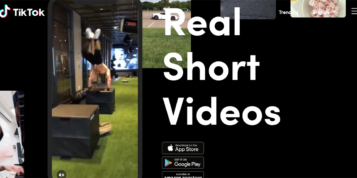Like any marriage, the union between brands and social media has its Barack Obama success stories, and its less than stellar moments with real consequences like McDonald’s recent Happy Meal twitter hashtag idea. Moments like this inevitably raise the perennial concerns over social media control for marketers.
Media Strategies’ Social Media Brand Index places Starbucks as the most successful social brand. A company whose above-the-line activity is practically non-existent compared to their social initiatives. By contrast, Nescafe is a company with a strong heritage in traditional TV-centric broadcast campaigns, particularly for its flagship Gold Blend product, yet fails to make an impact socially at 108th.
A recent Nielsen study estimates that just over 90% of consumers’ value advertising across earned media above all other forms. So the obvious question for advertisers is how to marry the emotional immersion of a TV campaign reaching a broad audience with a singular ‘loud’ message, with a more personalised ongoing conversation online.
We all know that TV is the equivalent of the communication loud-hailer – it’s a great way to get a commercial message to a large audience fast, confident that it will resonate with some of that audience. But using social media like this is like wandering over to a table of people you don’t know in the pub joining in a private conversation between friends.
For many brands there’s been an understandable clamour to be early to market for digital. The opportunity to build an individual connection and use it to increase the chances of brand advocacy is real and seductive.
When using the two together, TV is the ideal tool to whet the consumer’s appetite and to set out broadly what a brand has to offer. But the challenge comes when we move from traditional “one big message” communication to a more intimate “many small layers: conversation”.
One brand (happily a client of ours) that’s really understood the reason consumers use social media is Nivea for Men. Their Euro 2012 campaign included a social media element built on the wider above-the-line activity that leveraged the brand’s sponsorship of the England Football Team.
The ad, which featured ex-England internationals Paul Ince, Les Ferdinand and David Seaman, was designed to communicate the brand’s ‘Smooth the Irritation’ proposition and demonstrate the virtues of its Sensitive range. In social media we created an app that acts as a soundboard allowing users to take soundbites from the ad to create a mix against a backing track of their choice. Sharing control of the advertising content and the brand in this way creates a sense of shared ownership with the audience.
Digital offers the chance to build a more intimate brand experience. One that feels personal, but also valuable enough to share with friends and family. Social media apps represent a potent way to build a deeper experience for the consumer and richer data to feed back into continuous improvement of the personal relevance of our work.
Alongside its nationwide TV campaign introducing its new cereal Krave, Kellogg’s targeted its under-served young adult market with a property called the Choc Exchange. This virtual auction mechanism allowed users to earn and spend choc chunks by engaging with the brand – rewards included tickets to events, branded merchandise and other things that the community voted on. So while TV created notoriety and excitment around the launch, ultimately social allowed Kellogg’s to build a community around the brand.
And it’s that kind of community that can encourage sharing and conversation that doesn’t depend on being stimulated by the brand. Coca Cola’s a great example of setting an agenda for all of their communication involves haring values with their customer. From above-the-line original content, created by established stars like Mark Ronson and Katy B, through to digitally-minded real world activity centred on vending machines and the can itself.
For most big mainstream brands the secret is in helping people find a reason why they want to participate in communication in order to feel a sense, not just of shared value, but also a sense of personal ownership. And that’s a relationship that really is built to last.






